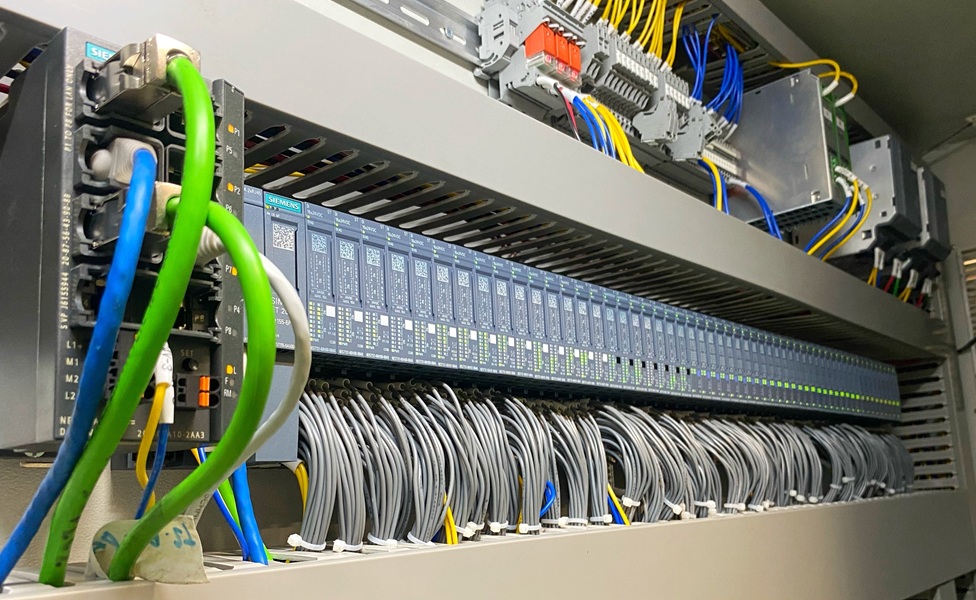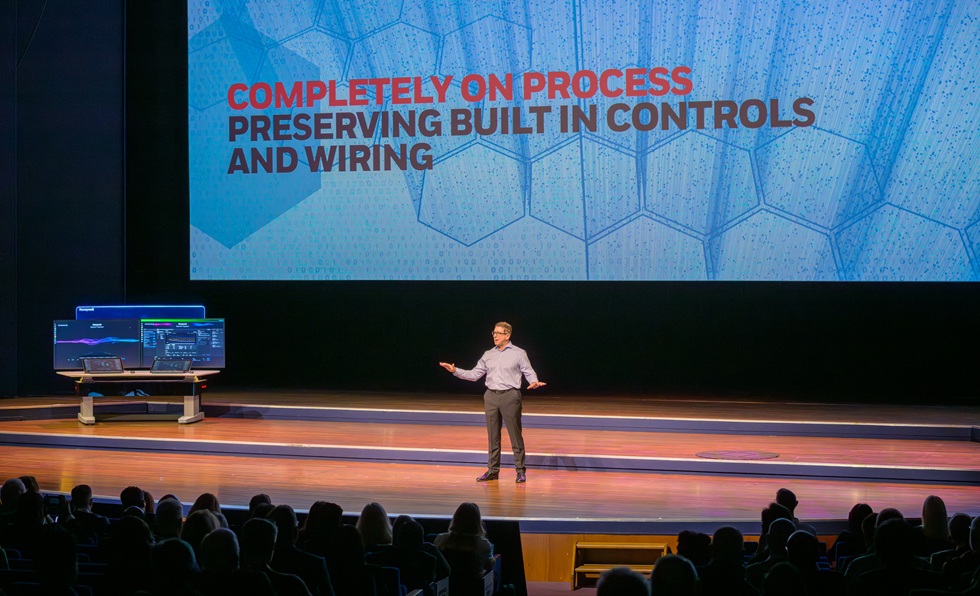Precision, connectivity, and intelligence are reshaping the foundations of modern production. In life sciences, the next generation of manufacturing is no longer defined only by mechanical sophistication but by how seamlessly data, digital models, and human ingenuity converge to accelerate innovation without compromising trust.
In an era of shrinking design cycles and rising regulatory pressure, life sciences manufacturers are being asked to do the impossible: deliver faster while making nothing less than perfect. It is a tension every engineering leader recognises, and it is transforming how automation systems are conceived and built.
Andy Glaser, Vice President of Commercial Strategy and Markets at ATS, has seen this shift from every angle. “Manufacturers want to accelerate time to market more than I have ever seen,” he says. “The schedules are shrinking, the devices are more complex, and the expectation for quality and compliance has not changed. That creates a unique engineering challenge.”
For ATS, the solution is not to simply add more automation, but to connect every layer of design and execution into one living system. “We are dealing with devices that are still in development while the automation to build them is already being designed,” Glaser adds. “Digital twin technology and virtual validation are helping bridge that gap, because they allow us to test and refine both in parallel without waiting for the other to be finished.”
That digital link between product and process is changing the rhythm of manufacturing. Virtual commissioning enables machine logic, motion control, and mechanical layouts to be tested before the first piece of steel is cut. By the time a line reaches the factory floor, the surprises have already been handled in the simulation. For manufacturers working under pressure to meet clinical launch deadlines, that can be the difference between profit and penalty.
Rethinking risk in the age of acceleration
The new speed of innovation has forced companies to redefine how they manage uncertainty. In Glaser’s view, “Every automation project begins with an understanding of technical risk. You cannot treat it as a single decision at the start; it must be mapped, modelled, and continuously mitigated.”
This is where the digital twin proves its worth. Instead of discovering flaws late in the build, engineers can model thousands of virtual iterations and see exactly how the equipment and product interact. It is a form of digital insurance that allows design teams to challenge assumptions long before production begins. “If surprises appear when the physical machine is already built, you have added time and cost,” Glaser says. “But if you have validated virtually, you can correct problems before they cascade through the schedule.”
The knock-on benefits extend beyond schedule compression. Digital twins have become valuable training environments, giving operators and technicians a head start on understanding the machine. For large life sciences programmes that require validation under strict regulatory oversight, this parallel development of people and systems means ramp-up times are cut without sacrificing quality.
For many engineers, the cultural impact is as important as the technical one. The idea that a design can evolve digitally before it exists physically changes how teams think. The process becomes less about reaction and more about foresight.
Data that drives decisions
Data has always been present in automation, but in recent years it has shifted from passive by-product to the active core of engineering decision-making. For ATS, that change began internally. “We have been using data for years to understand performance at the most granular level,” Glaser explains. “We monitor every pneumatic actuator, every servo axis, every station cycle time. We treat the control system as a diagnostic engine, not just a controller.”
This forensic use of data has quietly redefined how ATS optimises production. Each station in a line becomes its own feedback loop, creating a living map of performance that highlights bottlenecks and inconsistencies in real time. Engineers no longer rely on intuition or trial-and-error troubleshooting; the data shows exactly where performance drops off and why.
Over time, these insights have grown into predictive models that anticipate problems before they occur. “When you have a clear fingerprint of every cycle and motion profile, you can recognise when that signature starts to drift,” Glaser says. “That allows you to predict failures before they happen and move from reactive maintenance to proactive lifecycle management.”
In a sector where compliance and traceability are inseparable from performance, the same dataset underpins quality control. The control system records every event, building a transparent history of component handling, force measurement, and inspection results. For regulators, that digital thread is as vital as the product itself.
The value of modular thinking
Another quiet revolution is taking place in how systems are designed. Modularity, once treated as a cost-saving measure, has become a way to build flexibility directly into complex manufacturing environments.
“Standardisation reduces cost, reduces risk, and reduces schedule,” Glaser explains. “We have built platforms that use the same vision systems, control architectures, and drive technologies across projects. That allows us to deliver faster and integrate more easily with digital validation tools.”
Collaboration with Rockwell Automation has been central to this approach. The two companies have built a relationship that merges ATS’s mechanical design heritage with Rockwell’s digital control and data infrastructure. Shared standards across PLCs, safety relays, motion drives, and visualisation systems allow a seamless transition from concept to commissioning.
But modularity is not just about hardware. It also applies to software, data architecture, and even the workflows engineers follow. The aim is to create repeatable building blocks, physical and digital, that can be adapted to different devices, volumes, and regulatory environments without starting from zero.
For life sciences manufacturers, that modularity is the bridge between precision and agility. It allows them to build high-volume, high-quality systems while retaining the ability to adjust, expand, or replicate lines across global facilities.
From isolated cells to intelligent networks
Automation is no longer an island. The factory of the future will rely on systems that talk to each other, share intelligence, and respond collectively to change. Glaser describes it as a shift from isolation to orchestration. “Automation used to live inside a single cell or line,” he explains. “Now it is part of a network of connected systems that share data, learn from each other, and adapt to demand.”
This evolution is being fuelled by the convergence of automation and AI. Predictive analytics and agentic control architectures are beginning to appear in manufacturing environments that once relied solely on PLC logic. Instead of following static instruction sets, machines can analyse incoming data, predict trends, and make minor adjustments autonomously.
The result is a more fluid relationship between man and machine. Operators focus on supervision and optimisation rather than manual intervention, while the systems themselves manage much of the complexity behind the scenes. For manufacturers battling labour shortages and escalating production demands, that partnership is not optional, it is survival.
Trust, governance, and the digital spine
In a regulated industry, innovation cannot come at the expense of assurance. Trust remains the foundation on which every digital initiative must stand. Glaser believes that governance must now be treated as an intrinsic property of automation design, not a final checklist item. “You cannot treat governance as a compliance checkbox,” he says. “It must be embedded in the architecture, from the PLC code to the way data flows through the network.”
That principle extends to cybersecurity, API management, and agent observability. As systems become more interconnected and intelligent, the number of potential access points expands. Each one must be monitored, verified, and secured. The ability to track and explain machine behaviour will soon be as important as throughput or uptime.
Futureproofing, in Glaser’s view, begins with visibility. The more transparent the data flow, the easier it becomes to audit, optimise, and adapt. A connected system is only as trustworthy as its weakest unseen process.
Engineering the future in real time
As ATS prepares to demonstrate its latest technologies at the Rockwell Automation Fair in Chicago, the industry will see how far this connected philosophy has come. Among the systems on display will be a high-speed tube-set coiling and ultrasonic trimming system, a production platform that brings together Rockwell control logic, advanced motion, and safety integration with ATS’s mechanical precision. It is a tangible example of how digital design, modular engineering, and machine intelligence now operate as one.
For Glaser, this showcase is not about the equipment itself but what it represents: a manufacturing model that learns, adapts, and scales without compromising control. “We are building machines that not only assemble products but generate intelligence,” he reflects. “The next step is for that intelligence to drive continuous improvement, where systems learn from every cycle and adapt without manual intervention.”
That shift, from precision to prediction, is redefining what manufacturing means in the life sciences. The most advanced facilities will not be the ones with the largest machines, but those with the smartest connections. The true measure of innovation will be how data, design, and human expertise work together to close the gap between invention and delivery.
For companies navigating the intersection of automation and AI, this is no longer a theoretical horizon. It is already visible on factory floors from Ontario to Chicago, where digital twins, data loops, and modular design converge into a single, connected future.
In the world of life sciences manufacturing, speed matters, but connection decides who stays ahead.






